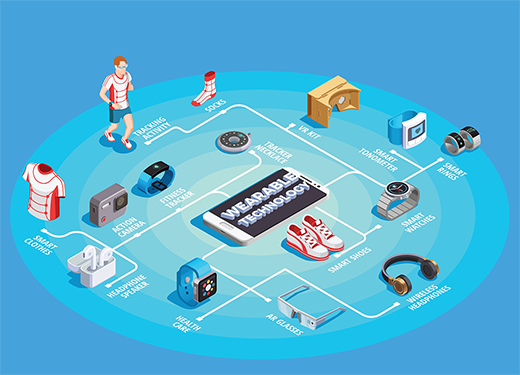| Oct 01, 2021 |
Using nanogenerators to power electronics with mechanical motion
(Nanowerk News) Since the discovery of piezoelectric materials that generate electricity from mechanical motion, there has been an interest to develop energy generators to develop self-sufficient electronics. However, many of these materials have poor dielectric properties and do not retain their polarized charge.
|
|
Now researchers develop a composite film made up of non-toxic materials that have good dielectric strength and display remnant polarization, paving the way for energy generators that have improved performance.
|
|
The push towards low powered, energy-saving devices has been a direction the electronics industry has always pursued. The switch to low powered LED lighting is a good example of this trend. Another avenue is the development of energy harvesting, self-sufficient devices. The idea here is to use materials that display piezoelectric and triboelectric effects to convert mechanical energy into electrical energy. Piezoelectric materials generate an electrical charge when stressed mechanically, while the triboelectric effect is the buildup of charges on two dissimilar materials after they have come in contact with each other.
|
|
Piezoelectric nanogenerators (PENG), triboelectric nanogenerators (TENG), and even hybrid piezo-triboelectric energy harvesters (HNG) that have improved energy harvesting capabilities have been developed with the aim to power low-power electronics by simple motion. These devices generally require dielectric materials that retain their polarization, and multiferroic materials that display ferromagnetic and ferromagnetic properties are suitable for this task.
|
|
Now in a recent study published in Nano Energy ("Lead-free flexible Bismuth Titanate-PDMS composites: A multifunctional colossal dielectric material for hybrid piezo-triboelectric nanogenerator to sustainably power portable electronics"), researchers from Daegu Gyeongbuk Institute of Science and Technology (DGIST), Korea and Indian Institute of Technology, Guwahati, India, develop a composite film that can be used in combination with other materials to produce energy harvesting generators.
|
|
The composite film was developed using a cost-effective technique where a multiferroic material, bismuth titanate Bi4Ti3O12 (or BiTO), was added to a flexible triboelectric polymer (PDMS). “Our main motivation behind this work was to develop a room-temperature multiferroic material having high colossal permittivity for hybrid piezo-triboelectric energy harvester,” explains Prof. Hoe Joon Kim from DGIST, who led the study. By sandwiching the BiTO-PDMS film between aluminum layers, the researchers fabricated an HNG that generates an electric charge when pressed and released.
|
|
But how do these multiple layers generate a current? The answer lies in the properties of the film and its response to mechanical action. The layers function as electrodes and as the device is pressed and released, the piezoelectric and triboelectric nature of the film synergize with each other to generate charges on the electrodes, creating a voltage. This synergistic effect was found to enhance the energy harvesting performance. By using multiple of these HNGs, the researchers constructed a multiunit HNG that was capable of powering a wristwatch and a calculator.
|
 |
| The compactness and the small size of these nanogenerators have immense potential in wearable technology that can be powered by biomechanical motion. (Image: DGIST) (click on image to enlarge)
|
|
Excited about the significance of the study, Prof. Kim states: “For the first time, the single-phase room-temperature multiferroic material with colossal dielectric constant has been achieved. The internal polarization amplification of the polymer was improved, boosting the energy harvesting performance of the hybrid energy harvester.”
|
|
As progress continues to be made to improve the energy harvesting performance of nanogenerators, these tiny devices could one day invalidate batteries in many cases, making electronics more sustainable and self-sufficient.
|

